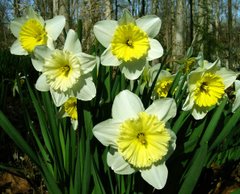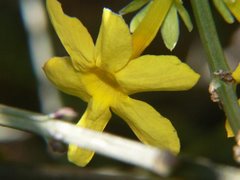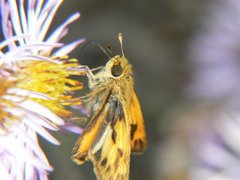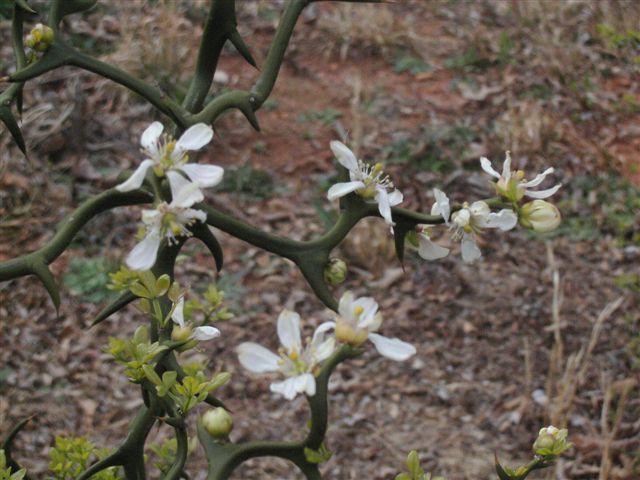It was the best of times, it was the worst of times... No, not that tale, but continuing with that theme, its flowers are white with red stripes, its flowers are red with white edges. The red and white flowers I'm referring to are those of Crinum × herbertii, those tough hybrids of Crinum bulbispermum and Crinum scabrum, whose peak season in the garden is rapidly approaching.
'Schreck' kicked off the season a couple of weeks ago and is getting ready to bloom again, and there are scapes rising on 'Carroll Abbott' and just about every other Crinum × herbertii in the garden. This post will focus on two that are blooming now, one with an unfortunate name, and another with no name, but deserving a good one.
The one with the unfortunate name is 'Pat's Herbertia'. It's unfortunate because Herbertia is the name of an IBS publication, also the name of a genus in the Iris family, while herbertii is the name used for hybrids between C. bulbispermum and C. scabrum. Why its hybridizer, Patrick Malcolm, mixed up these names is unclear, but despite the name, it's a good plant.
When hybridizing Crinum species, unless the seed and pollen parents are very closely related, the resulting F1 hybrids cannot form seeds. Like mules, they're sterile. The comparison with mules is not completely accurate, because the pollen of F1 Crinum hybrids is often viable.
That's what happened with 'Pat's Herbertia', it's a backcross, obtained by transferring pollen from a Crinum × herbertii flower to a Crinum bulbispermum flower. Note that while most Crinum × herbertii are half Crinum bulbispermum and half Crinum scabrum, 'Pat's Herbertia' is three quarters Crinum bulbispermum and one quarter Crinum scabrum, and like many Crinum backcrosses, it is capable of forming seeds.
In addition to having seed fertility, 'Pat's Herbertia' differs from most Crinum × herbertii by its large size, with scapes taller than 5 feet (1.5 m), and its extra glaucous leaves. My only real complaint is that it has very long floral tubes, resulting in flowers that are extra droopy during the hottest part of the day, recovering their posture in the evening.
The other Crinum × herbertii doesn't have a name yet, but it's a great plant and really needs one. A clump of it was found in Greenwood Cemetery and after seeking permission from the clump's "owner", who for the record didn't say no, an offset was removed. It turned out to be a vigorous Crinum × herbertii with large, pink striped flowers. Another nice feature is that its flowers face upright and hold their posture well even during the heat of the day.
This excellent Crinum does not match the description of any named Crinum × herbertii, so it's in need of a name. It could be given the name on the headstone where it was found, or if that's not possible, perhaps naming it 'Greenwood' or 'Greenwood Cemetery' is appropriate.



































